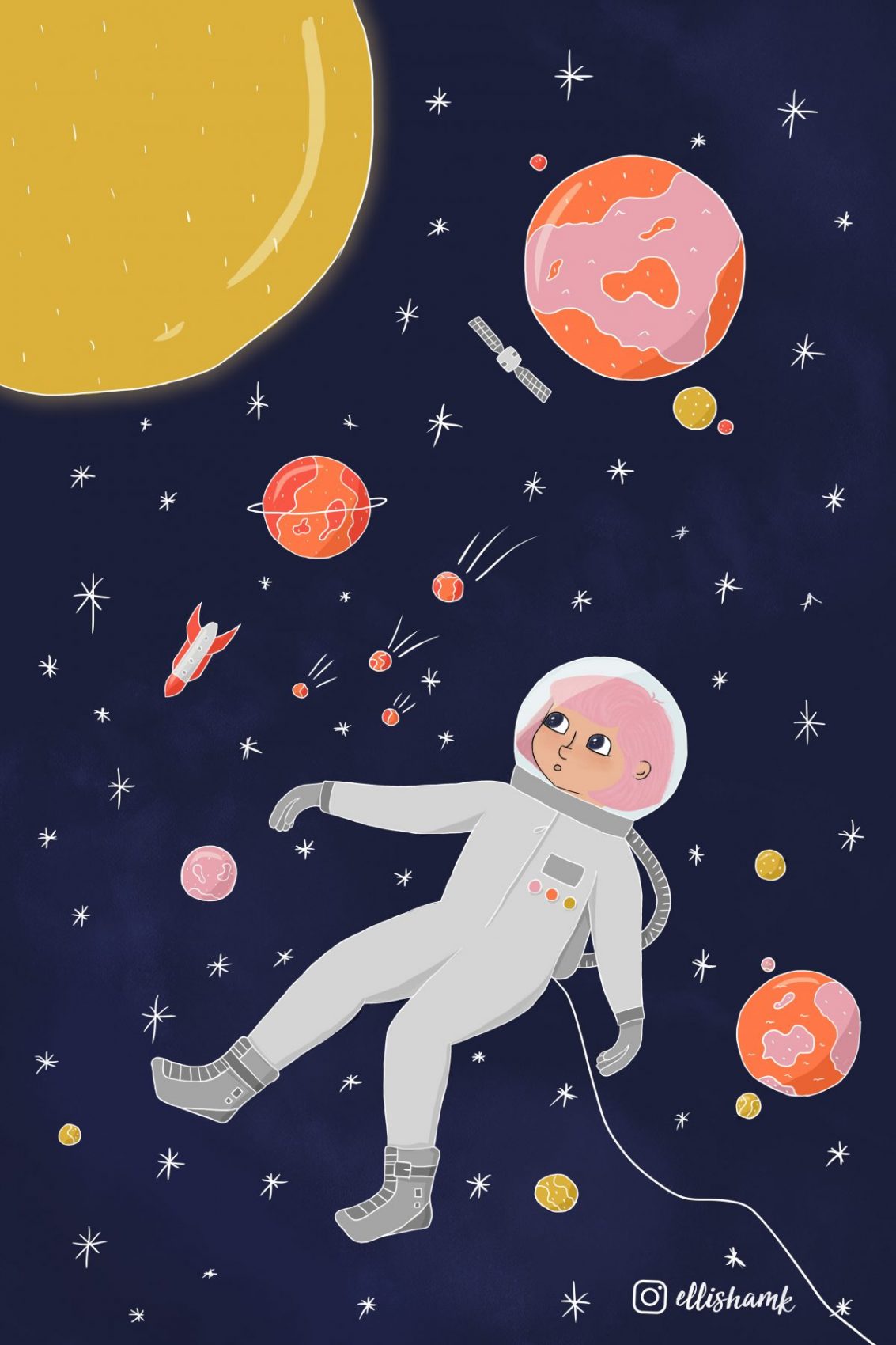Words by Rebekah Andrews
Image by Ellisha Kriesl
Hurtling through space at this exact moment are millions of fragments from old spacecrafts; remnants of former satellites and tools used by astronauts from the very beginning of human space exploration. Researchers call these remnants ‘space junk’, and they are wreaking havoc on highly valuable satellites. On board the International Space Station (ISS), currently the home of six astronauts, space junk continues to destroy technology essential to their survival.
Doctor Alice Gorman, an archaeologist from Flinders University who specialises in space junk, understands the destructive forces of the junk, but argues the man-made infrastructures, materials and technologies cycling the Earth hold significant heritage value. Which poses a question of classification, is the floating debris trash or treasure?
“I think [it] is really important to not look at space junk just as junk … a lot of this stuff is junk that is telling us our own stories about how we engage with space,” she said.
“People sometimes leave out that there’s all kinds of natural objects in Earth’s orbit as well, but space debris is referring specifically to human manufactured materials,” Dr Gorman said.
The problem is that space junk poses a problem for the future of space exploration.
“There are thousands of very expensive satellites which are providing us with things like weather data and telecommunications, and if they collide with a bit of space debris … it can cause them to not work,” Dr Gorman said.
This is why scientists and researchers in countries all over the world, from Japan to the European Space Agency, are working to rid the sky of space junk. The Chinese, for example, suggested using a laser to shatter bigger pieces of space junk into tiny pieces; a solution potentially less damaging to our satellites. In Australia, the Space Environment Research Centre (SERC) is also looking into laser technology for removing space junk.
This is a form of practical research for moving space junk, but other experts are looking into modelling, and the classification of all nearby space junk. The University of New South Wales has been exploring research in GPS receivers which could report the positioning of the 21,000 artificial objects currently able to be tracked. This doesn’t include the millions which are too small to be tracked by current technology.
“If the rate of collisions become too high, you won’t be able to put anything into orbit without it being hit by a piece of space junk,” Dr Gorman warned.
However, Dr Gorman also highlighted the dangers of completely cleaning up Earth’s orbit.
“You wouldn’t want a situation where someone gets overly enthusiastic about their space junk clean up method, removes Vanguard 1 from orbit and then is sort of like oh dear, perhaps we shouldn’t have done that.”
Vanguard 1 is the oldest satellite in orbit around the Earth, this year marking the 60th anniversary of the day it left the planet. As an archaeologist, Dr Gorman has a vested interest in the historical value of artefacts such as Vanguard 1. She suggests we form a heritage list of culturally significant items – so when the right technology comes about, space junk such as Vanguard 1 can be saved from destruction.
“It’s probably the kind of work that at a national level, different countries might want to undertake to identify their cultural heritage objects in Earth’s orbit,” she said.
But why is an archaeologist looking up at the night sky?
“I suppose the draw card here is the thing that archaeologists all over the world are drawn by, the opportunity of telling stories that nobody knew about before,” she said.
She is not just an archaeologist; she is at the forefront of a field of study termed ‘space archaeology’. For Dr Gorman, space junk, despite its dangers, “is about connecting people to space,” by finding and preserving histories which might otherwise have been lost, and making the great unknown seem “a lot closer to home.”


